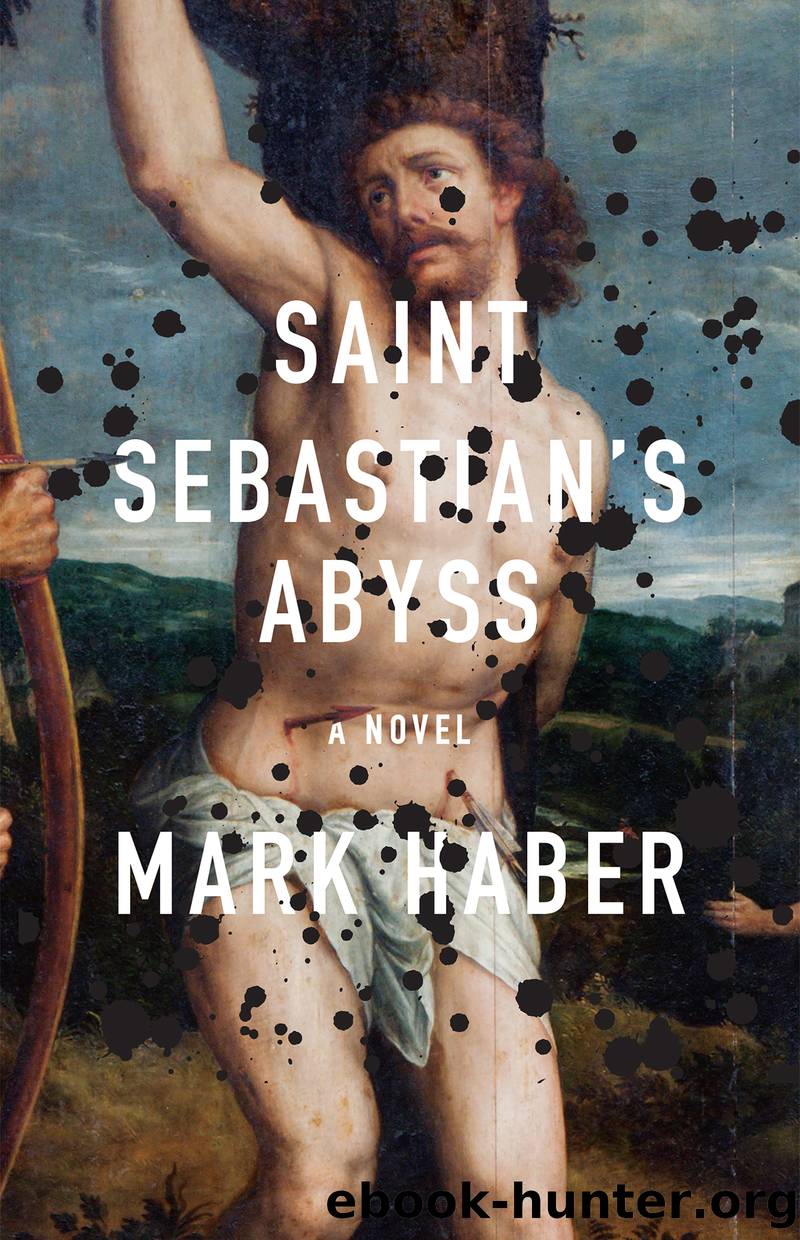Saint Sebastian's Abyss by Mark Haber

Author:Mark Haber
Language: eng
Format: epub
Publisher: Coffee House Press
49
There lies a nothingness, a hopeless expanse thatâs always drawn me more to the second lesser painting than the first. Needless to say, both works are repugnant and abominable, works that, if Schmidt and I had our way, wouldnât exist. Still, the second untitled painting strikes me as a work more at ease with its dreary and accursed existence than in battle with its dreary and accursed existence. The second untitled work, or monkey painting, is quieter and less aggressive. The second untitled work, or monkey painting, allows the eyes to rest a bit. This is what I told Schmidt when he asked about my preference for the second monkey painting over the first monkey painting. The second untitled work, which hangs on the right side of Saint Sebastianâs Abyss in the Rudolf Gallery, whose mission is apparently to make Count Hugo Beckenbauerâs three remaining works a monstrous triptych of sorts, is also eight feet by twenty, enormous and encroaching, a still life that boasts a bowl of rotting fruitâpears, black grapes, plumsâas well as a glass of red wine and a candle. Mosquitos in the foreground, poised along the ridge of the glass, suggest obliteration, doom, and decay, endowing the work with a theatrical quality that forces the viewer to wonder if the artist is mocking them. The plums, painted in thick, saturated brushstrokes, lie in shadow while the rest of the fruit, festering and spoiled, sits in an opaque light. Both above and below the center of the painting is an abyss, a dozen or so inches of black space and standing several yards away one wouldnât suspect there was any paint there at all, as though the bowl of fruit, the heart of the still life, had been painted on a canvas too large for it. Closer though, one sees layers of dark paint, brutal and impassioned. Schmidt termed the color bruised charcoal. I called it weeping sable, the title, in fact, of my seventh book, Weeping Sable, a tiny book-length essay that explores the colors used in Saint Sebastianâs Abyss as well as the second untitled painting. The dark areas above and below the fruit are infused with mystery and are easily my favorite parts of the second monkey painting, since they allow the eyes to wander away from the painting itself, which is truly atrocious, giving the viewer, that is us, a reprieve from Beckenbauerâs horrible attempt at a still life. I appreciate the blank space and acknowledge the blank space and, in some respects, feel indebted to the blank space both above and below the center of the work as it allows me to avoid the center of the work itself and reflect on other things, a meadow bathed in diaphanous light or the billowy arms of a bygone lover, or perhaps the murmuring of a winding stream, and on some occasions, moving my eyes slightly, imperceptibly to the left, I steal a glance at the unrivaled sublimity of the central painting, Saint Sebastianâs
Download
This site does not store any files on its server. We only index and link to content provided by other sites. Please contact the content providers to delete copyright contents if any and email us, we'll remove relevant links or contents immediately.
In Control (The City Series) by Crystal Serowka(36182)
The Wolf Sea (The Oathsworn Series, Book 2) by Low Robert(35184)
We Ride Upon Sticks by Quan Barry(34476)
Crowbone (The Oathsworn Series, Book 5) by Low Robert(33567)
The Book of Dreams (Saxon Series) by Severin Tim(33331)
The Daughters of Foxcote Manor by Eve Chase(23559)
Trainspotting by Irvine Welsh(21568)
Call Me by Your Name by André Aciman(20429)
The Secret History by Donna Tartt(18943)
Shot Through The Heart (Supernature Book 1) by Edwin James(18884)
All the Missing Girls by Megan Miranda(15769)
The Girl from the Opera House by Nancy Carson(15747)
American King (New Camelot #3) by Sierra Simone(15613)
Pimp by Iceberg Slim(14433)
Sad Girls by Lang Leav(14356)
The Betrayed by Graham Heather(12784)
The Betrayed by David Hosp(12728)
4 3 2 1: A Novel by Paul Auster(12329)
Still Me by Jojo Moyes(11219)
